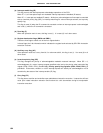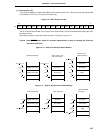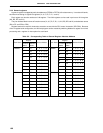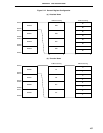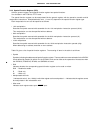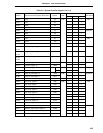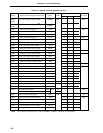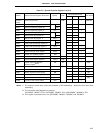
104
CHAPTER 5 CPU ARCHITECTURE
(a) Interrupt enable flag (IE)
This flag controls the interrupt request acknowledge operations of the CPU.
When IE = 0, all interrupts except non-maskable interrupt requests are disabled (DI status).
When IE = 1, interrupts are enabled (EI status). At this time, acknowledgment of interrupts is controlled
with an inservice priority flag (ISP), an interrupt mask flag for various interrupt sources, and a priority
specify flag.
This flag is reset (0) when the DI command is executed or when an interrupt request is acknowledged
and is set (1) when the EI command is executed.
(b) Zero flag (Z)
When the operation result is zero, this flag is set (1). It is reset (0) in all other cases.
(c) Register bank select flags (RBS0 and RBS1)
These are 2-bit flags to select one of the four register banks.
In these flags, the 2-bit information which indicates the register bank selected by SEL RBn instruction
execution is stored.
(d) Auxiliary carry flag (AC)
If the operation result has a carry from bit 3 or a borrow at bit 3, this flag is set (1). It is reset (0) in all
other cases.
(e) In-service priority flag (ISP)
This flag manages the priority of acknowledgeable maskable vectored interrupts. When ISP = 0,
acknowledgment of a vector interrupt request specified to be low by the priority order instruction flag
register (PR0L, PR0H, PR1L) (See 21.3 (3), Priority specify flag registers (PR0L, PR0H, PR1L)) is
prohibited. Furthermore, whether or not an interrupt request can actually be acknowledged or not is
controlled by the status of the interrupt enable (IE) flag.
(f) Carry flag (CY)
This flag stores overflow and underflow upon add/subtract instruction execution. It stores the shift-out
value upon rotate instruction execution and functions as a bit accumulator during bit manipulation
instruction execution.











